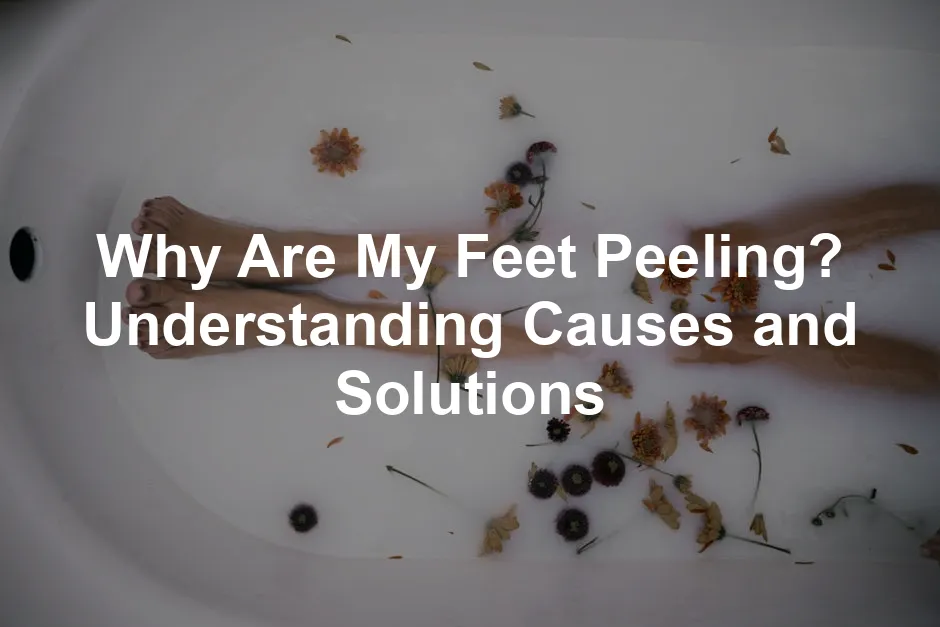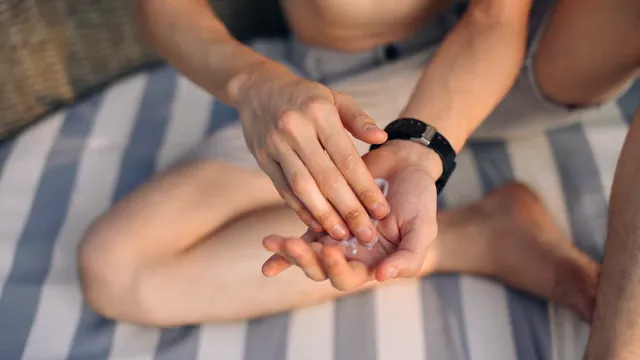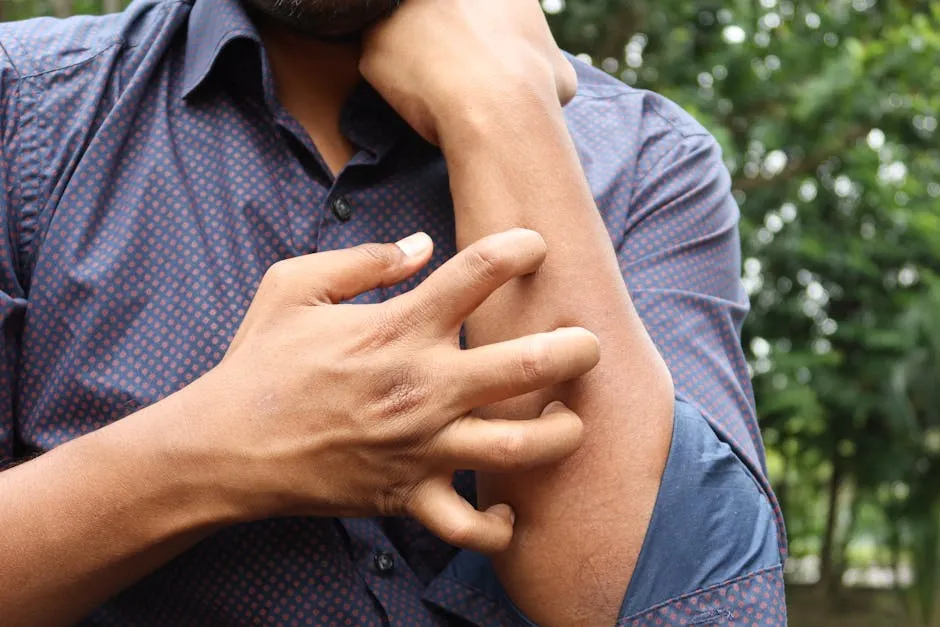
Why Are My Feet Peeling? Understanding Causes and Solutions
Introduction
Peeling feet are a common issue that many people face. This condition can affect your comfort and even your self-esteem. It’s essential to understand why your feet peel to find effective treatments. In this article, we will explore the causes of peeling feet, discuss various treatments, and highlight when it’s time to seek medical advice. But first, let’s keep those tootsies happy with some top-notch Foot Moisturizer Cream!Common Causes of Peeling Feet
1. Dry Skin
Dry skin is a frequent culprit for peeling feet. It can arise from various factors, including environmental conditions and health issues. When skin lacks moisture, it becomes rough, scaly, and prone to peeling. Several factors contribute to dry skin. Low humidity levels, hot showers, and dehydration can all play a role. Additionally, certain habits like smoking and prolonged sun exposure can worsen skin dryness. Symptoms of dry skin include tightness, flakiness, and visible cracks. You might even experience discomfort or itchiness. Did you know that dry skin can affect anyone? It’s common in older adults and people living in dry climates. To combat dry skin, assess your hydration levels and moisturizing habits. Are you drinking enough water? Are you using a good moisturizer daily? Keeping your feet well-hydrated can significantly improve their condition. Consider using a Eczema Relief Cream to soothe those stubborn patches!
2. Athlete’s Foot (Tinea Pedis)
Athlete’s foot is a common fungal infection that often leads to peeling skin. This condition usually starts between the toes and can spread to other areas. Symptoms include itching, burning, and a scaly rash that may blister and peel. The fungus thrives in warm, moist environments. Places like public showers, swimming pools, and locker rooms are hotspots for transmission. It’s contagious, so be cautious! To prevent athlete’s foot, practice good foot hygiene. Keep your feet clean and dry, and avoid sharing footwear. Over-the-counter antifungal treatments are effective, such as this Athlete’s Foot Treatment. If symptoms persist, consult a doctor for stronger options. Did you know that athlete’s foot affects millions of people worldwide? It’s especially common among athletes and those who wear tight shoes.
3. Eczema (Atopic Dermatitis)
Eczema, or atopic dermatitis, is another cause of peeling feet. This chronic condition leads to red, inflamed skin that can crack and peel. Symptoms include intense itchiness and dryness. Triggers for eczema can vary from person to person. Common culprits include allergens, stress, and irritants. It’s often linked to a family history of allergies or asthma. Eczema can occur at any age but is particularly prevalent in children. Treatment may involve using emollients and topical corticosteroids. If you experience persistent symptoms, consider consulting a dermatologist for tailored advice. Managing eczema often requires a comprehensive approach. Identifying and avoiding triggers is essential. Are you aware of what irritates your skin? Keeping a journal can help pinpoint these triggers. And while you’re at it, don’t forget to pamper your feet with a little Psoriasis Treatment Cream!
4. Psoriasis
Psoriasis is a chronic autoimmune disorder that affects the skin. It can cause red, scaly patches on various body parts, including the feet. This skin condition occurs when the immune system mistakenly accelerates skin cell production. The result? Thick, flaky patches that can be itchy and uncomfortable. Common symptoms include raised, red patches covered with silvery scales. You might notice these patches on the soles of your feet. They can lead to discomfort and even pain while walking. If you experience persistent scaling or peeling, it’s essential to consider psoriasis as a potential cause. Treatment options for psoriasis focus on managing symptoms. Topical corticosteroids can reduce inflammation and scaling. Moisturizers also play a crucial role in keeping the skin hydrated. For more severe cases, treatments may include phototherapy or systemic medications. These options help to slow down skin cell production and reduce flare-ups. Psoriasis is not uncommon. It affects approximately 2-3% of the global population. Many people with psoriasis have a family history of the condition, indicating a genetic link. If you suspect you have psoriasis, consider seeking specialized treatment. A dermatologist can provide tailored advice to manage your symptoms effectively.
5. Hyperhidrosis (Excessive Sweating)
Hyperhidrosis is a condition characterized by excessive sweating. This can lead to various skin issues, including peeling on the feet. The sweat glands become overactive, producing more moisture than needed. This excess moisture creates an environment where skin irritation can thrive. Symptoms include constant wetness, which can lead to discomfort and skin complications. Peeling skin often occurs due to prolonged moisture exposure. Other complications may include fungal infections or irritation from friction. There are several treatment options available. Over-the-counter antiperspirants that contain aluminum chloride can be effective. For more severe cases, prescription medications or treatments like iontophoresis may be recommended. This technique uses electrical currents to reduce sweating. Hyperhidrosis affects a significant portion of the population. Estimates suggest it impacts about 3% of people worldwide. If you struggle with excessive sweating, consider lifestyle changes. Wearing moisture-wicking socks and breathable footwear can help manage symptoms.
6. Sunburn
Sunburn isn’t just a summer issue; it can also lead to peeling skin on the feet. When your feet are exposed to UV rays without protection, they can become red and painful. This damage often results in the skin peeling as it heals. Symptoms of sunburn include redness, swelling, and tenderness. After a few days, the affected skin may start to peel. Prevention is key! Always apply a broad-spectrum sunscreen to your feet when outdoors. You can also wear protective footwear, especially during peak sunlight hours. For mild sunburn, treatment includes keeping the skin cool and moisturized. Aloe vera gel can provide soothing relief, while OTC pain relievers can help reduce discomfort. Severe sunburn may require medical attention. Statistics show that sun exposure is a significant risk factor for skin cancer. Protecting your feet is crucial, as they’re often overlooked. So, remember to apply sunscreen generously and often on all exposed skin, including your feet!
Understanding the effects of sun exposure is important for skin care. For more information, check out this article on why we get sunburned.
7. Contact Dermatitis
Contact dermatitis is a skin reaction triggered by irritants. These irritants can lead to peeling skin on your feet. Common culprits include certain materials and shoes. For instance, synthetic fabrics or poorly fitting shoes can cause irritation. If you wear tight shoes, your feet might rub against the material, leading to discomfort and peeling. You may notice symptoms like redness, itching, or blisters. It’s crucial to identify the irritants causing your skin to react. Management often involves avoiding known allergens. If you suspect your shoes or socks are the issue, consider switching to breathable materials. Statistics show that contact dermatitis affects around 15-20% of the population at some point. This condition can be particularly annoying, making it essential to address it promptly. If you experience peeling due to contact dermatitis, take note of what you wear. Identifying and avoiding these irritants can significantly improve your skin’s condition. Don’t forget that a good Foot Scrubber Exfoliator can help keep your feet smooth and irritation-free!
When to See a Doctor
If your feet are peeling, it’s essential to know when to consult a doctor. Certain symptoms may indicate a need for professional evaluation. If you notice severe redness, swelling, or pain, don’t hesitate to seek help. In particular, watch for peeling that doesn’t improve with at-home care. If you have diabetes, peeling skin could signal complications. Also, be mindful of any signs of infection, like increased warmth or discharge. A healthcare provider might conduct tests to determine the cause. They may examine your skin and ask questions about your symptoms. Skin scrapings or allergy tests could also be performed to identify specific triggers. Persistent or worsening symptoms deserve attention. Consulting a healthcare professional ensures you receive appropriate treatment tailored to your condition. Don’t wait too long—your feet deserve care! Consider keeping a Foot Care Journal to track your symptoms and treatments.
Conclusion
Peeling feet can stem from various causes, including dry skin, athlete’s foot, eczema, psoriasis, and hyperhidrosis. Each condition presents unique symptoms and requires different treatments. By understanding the root cause of your peeling feet, you can manage and alleviate symptoms effectively. Proper foot care is vital. Moisturizing regularly, wearing breathable footwear, and maintaining good hygiene can help prevent peeling. If you notice persistent symptoms, seeking medical advice is essential to ensure proper diagnosis and treatment. Don’t forget to treat your feet with a Foot Spa Massager for a little TLC! Take proactive steps to care for your feet. Your feet deserve attention, and by addressing any issues early, you can maintain their health and appearance.
FAQs
What are the common causes of peeling feet?
Peeling feet can occur due to athlete’s foot, dry skin, and eczema. Each of these conditions has distinct symptoms and requires targeted treatments.
Is peeling skin on the feet serious?
Peeling skin is not usually serious. However, if it persists or is accompanied by pain or swelling, it may indicate a more serious condition that requires medical attention.
How can I treat athlete’s foot?
Over-the-counter antifungal creams and powders are effective treatments for athlete’s foot. Keeping your feet clean and dry is crucial for prevention.
What should I do if my feet keep peeling despite treatment?
Consider consulting a healthcare provider for further evaluation. Persistent peeling may require a more thorough examination.
Can lifestyle changes help prevent peeling feet?
Yes! Regular foot hygiene, staying hydrated, and wearing appropriate footwear can significantly reduce the chances of peeling.
Is peeling skin contagious?
Some conditions, like athlete’s foot, are contagious. Avoid sharing shoes and towels to prevent spreading the infection.
When should I seek medical help for peeling feet?
Seek medical help if you experience severe symptoms, such as pain, significant swelling, or if the peeling does not improve with home care.
All images from Pexels




